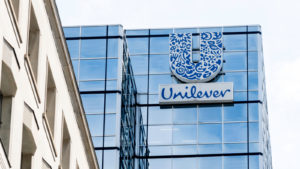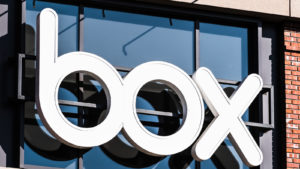After at least several dozen headlines affirming the phase-one U.S.-China trade deal in recent weeks, markets continue to float higher. And as more bullish investors participate in the market, fair valuations are of little concern. Slowing growth for companies whose stock prices are at 52-week highs is getting ignored, too. When the market’s optimism gets too big and no one is taking any money off the table, conservative investors need to exercise caution.
Getting cautious too soon will take away more market gains, but if sentiment suddenly reverses, that narrative changes. Predicting where markets are headed next is just about impossible. Still, investors may use screening tools, like those on StockRover, to look for stocks to consider selling now. There are seven stocks cautious investors should add to the selling list. This is based on unfavorable valuations or weak fundamentals, or both.
Stocks to Sell: Etsy (ETSY)
Etsy (NASDAQ:ETSY) spent much of last year in a downtrend and the stock bottomed at $40. In the third quarter, the company lowered its EBITDA (earnings before interest, taxes, depreciation and amortization) guidance to 22%-23%. Previously, it had issued a 22%-24% target. This is a small miss, but when the stock is still selling at 60 times earnings, Etsy cannot afford to issue a lighter forecast. In the quarter, the company posted revenue growing 27.6% to $192 million. Etsy’s revenue take rate increased again, to 17.1% — the highest ever reported.
So long as Etsy continues to connect buyers with suppliers, its business will flourish. For example, the company invested in a better search tool. On the back-end, the “compute utilization” increased as it moved from context-specific search rankings to non-linear models. The practical result is users getting more results that fit their search terms. Etsy also changed its messaging interface so that conversations have better engagement among all parties. Previously, the email-like interface was stale and not engaging. And on the mobile front, Etsy improved its mobile app, adding new cart features and recommendations.
With all the enhancements and growth ahead, why sell Etsy now? Etsy shares are already up by around 15% in the last month alone. The stock is pricing in a strong holiday quarter. Instead of waiting, investors may want to lock in gains before the company’s next earnings report.
In a 5-year discounted cash flow growth exit model, Etsy cannot post revenue growth below 25%. If it does, the stock’s fair value falls by roughly 15%
Unilever (UL)

A StockRover screening revealed that Unilever (NYSE:UL) has a low growth score. Unilever’s stock is trading at the mid-point of its range. Although its P/E is below 15 times, investors are not ignoring the Dec. 17, 2019 growth outlook warning.
Unilever said that its underlying growth will be in the lower half of the 3%-5% multi-year range in 2020. That puts the stock’s price/earnings-to-growth ratio as low as 3 times, a high ratio for a company facing a slowdown. The company’s failure to identify consumer trends and a shift toward fresh products are hurting demand. The stock pays a dividend that yields 3.1% but macroeconomic headwinds are definitely hurting the business. Management said that operations in India and West Africa contributed most to the slowdown.
After the stock’s recent drop, the valuations reflect the company’s near-term prospects. Yet a broader market selloff could send this stock lower. If that happens, value investors will have a better entry point to buy and hold the stock at a bigger discount. Still, companies like Procter & Gamble (NYSE:PG) and Nestle (OTCMKTS:NSRGY) trade at higher valuations, but they are also growing and innovating.
Unilever has three differentiated divisional strategies in beauty and personal care, home care, and food and refreshments. Eventually, its long-term commitments in new markets will pay off, but the execution of such plans is a risk factor.
Analysts think Unilever stock trades close to fair value near $58. Conversely, in an earnings power model, investors may assign an EBIT margin in the low 22% range. This would suggest the stock’s fair value is $50.
Box (BOX)

Shares of Box (NYSE:BOX) failed to break out of the $16-$17 range. The company beat expectations and raised its guidance in the third quarter. So, why sell or avoid this stock at these levels? Box raised its Q4 revenue guidance to between $181 million and $182 million. In Q3, billings rose 10% to $171.9 million while cash from operations topped $8.9 million.
Box’s external collaboration software solution is generating decent growth rates, but the company faces stiff competition. Even after Dropbox (NASDAQ:DBX) reported an improving quarter, the stock did not move up by much. Investors are no longer willing to pay a premium for either stock. This negative sentiment may hold back the stock in 2020. When software companies like Microsoft (NASDAQ:MSFT) or Alphabet (NASDAQ:GOOG, NASDAQ:GOOGL) offer similar solutions, investors could hold those stocks instead. Both stocks are also enjoying 52-week highs and have tremendous growth ahead in the cloud space.
Box boasts of having 69% of Fortune 500 companies as customers, but the contract size could change over time. Customers may opt for software-as-a-service solutions from International Business Machines (NYSE:IBM), Microsoft or Google instead of paying for a Box subscription. And when the revenue growth for 2020’s third quarter topped 14%, free cash flow growth of $2.4 million is very small. Investors face fewer risks holding bigger software companies whose free cash flow is growing at a strong rate.
Macom Technology (MTSI)
In the broad-line semiconductor space, Macom Technology (NASDAQ:MTSI) is enjoying an uptrend after posting Q4 non-GAAP earnings of 1 cent. Revenue fell 25.8% year-over-year to $112.2 million. For the first quarter of 2020, Macom forecasts EPS between 1-5 cents and gross margins between 53% and 55%.
The company is undergoing a restructuring plan which will also lower costs, but the pace of operating cash flow growth does not justify the stock’s recent run-up. Fourth-quarter free cash flow was negative $13.6 million. The company has to sustain capital expenditures to support long-term growth.
Macom sees growth driven by the 5G trend and yet investors could do better by holding NXP Semiconductors (NASDAQ:NXPI) or Ericsson (NASDAQ:ERIC) instead. Its Huawei business is limited, due to U.S. restrictions against that company. And Macom said on the conference call that it is not expecting any of that business to return unless relations between Huawei and the U.S. change. CEO Stephen Daly said:
“… We think we’ll continue to grow, even as our Huawei business declines. We’d like to think this is temporary. And perhaps in the future, when — if and when they come off the entity list, then we’ll certainly reengage and that could provide us some potential upside. But all of our planning, all of our focus right now is certainly ex-Huawei.”
Intercept Pharmaceuticals (ICPT)

After Intercept Pharmaceuticals (NASDAQ:ICPT) stock peaked near $124, markets might start pricing in the third quarter’s $2.59 EPS loss. Intercept posted revenue growing a solid 31.8% to $62 million. It submitted a new drug application to the U.S. Food and Drug Administration for the use of obeticholic acid (OCA) in patients with fibrosis. If approved, OCA could “become the foundational therapy in patients with advanced fibrosis due to NASH [nonalcoholic steatohepatitis].”
Intercept also raised its full-year net sales guidance for Ocaliva. It expects revenue between $245 million and $250 million. This is only up slightly, from the May 2019 guidance of $235 million to $245 million. So, the stock’s near-term upside is the risk for investors. Markets may already have priced in positive outcomes for its REGENERATE study, a Phase 3 NASH study.
Markets already priced in Ocaliva sales growth of 32% in Intercept’s stock, and while international net sales of $16.3 million are 65% higher than last year’s levels, investors are unwilling to bid the stock higher.
The company has been having ongoing discussions with payors regarding its Phase 3 Regenerate trial data. Until patients get that coverage, the stock’s performance may lag.
Match Group (MTCH)
After announcing on Dec. 19 that IAC/InterActive (NASDAQ:IAC) and Match Group (NASDAQ:MTCH) would split up, the stock soared to new highs. The online dating app provider now enjoys a price-to-sales ratio of nearly 13 times and has a 25 billion market capitalization. Investors also chose to forget the weakening fundamentals when Match posted lowered Q4 revenue guidance. The company expected revenue in the range of between $545 million and $555 million when analysts expected $559 million.
Historically, Match enjoyed incredible growth. Plus, Tinder is a global success story whose revenue growth (compounded annually) of 158% is unparalleled to any other app. Yet if singles start to use other apps or do not bother trying Match Group’s products, the business will slow. For now, management is upbeat on 2020’s prospects. CFO Gary Swidler said:
“… We are increasingly confident that the rest of the brands in aggregate are going to start to deliver some growth for us on revenue in 2020, so I think it will be modest at first but we believe we are approaching the point where the other brands are going to contribute.”
But international growth might mean moving toward a subscription model for maximum monetization. That will hurt near-term results but is good for the company in the long run. So, bullish investors might want to lock in profits before markets overreact to the sudden slowdown in the company’s growth.
Immunomedics (IMMU)

Immunomedics (NASDAQ:IMMU) announced a $250 million share offering in December that hurts existing shareholders. But it needs the funds to launch its key drug. The company said it will use these new funds to launch the commercial readiness of sacituzumab govitecan. If approved, this drug will be used in the U.S. to treat metastatic triple-negative breast cancer.
It will also be investing in manufacturing to ready the product for market. Prior to the cash raise, the company held $364.6 million in cash and cash equivalents. Considering the higher expenses in the third quarter for research, development, sales and marketing, expect higher costs ahead. The approval and commercial launch of sacituzumab, along with an expanded clinical development of the drug in other indications will hurt operating profits.
On a brighter note, Immunomedics faced minimal staff turnover while keeping its entire commercial sales representative team. So, as it approaches a product launch, investors may expect strong initial sales.
This year, investors may expect the company to a meet a few key milestones to advance this key treatment. Until the company posts results for the use of sacituzumab govitecan in other conditions, IMMU stock may trend lower. Investors will be waiting to see some data.
Beyond Meat (BYND)

Beyond Meat (NASDAQ:BYND) held the $80 level over the last two months. Then, strong buying volume in January sent the stock above the $120 level. And with bears holding a 20% short float on the stock, the artificial meat supplier needs to do more than just sign supply deals.
On Jan. 14, Roquette and Beyond Meat announced a multi-year pea protein supply deal. Though the stock rose on the news, the two firms already had a longstanding partnership that started 10 years ago. Still, Beyond Meat will receive products for the next three years. For now, bullish market sentiment is allowing the stock to rally on supply deals alone. Eventually, investors will demand improving operating profits instead of revenue growth to justify holding the stock.
In the third quarter, the company reported a GAAP profit of 6 cents as revenue rose 250% year-over-year to $92 million. Yet the $360 million in annualized earnings implies a price-to-sales ratio of nearly 35 times. All it takes is consumers buying soy-based products from the competition or eating meat again. If the fad for meatless products fades, investors are stuck holding an expensive stock.
Bears should not underestimate the potential of the still-growing fad. Growing consumer awareness of the risks of animal protein in contributing to cancer or heart disease may not go away.
As Beyond Meat continues its pace of innovation, that investment cost will hurt near-term results. Investors wary of the company’s profit growth potential should avoid the stock for now.
As of this writing, Chris Lau did not hold a position in any of the aforementioned securities.


